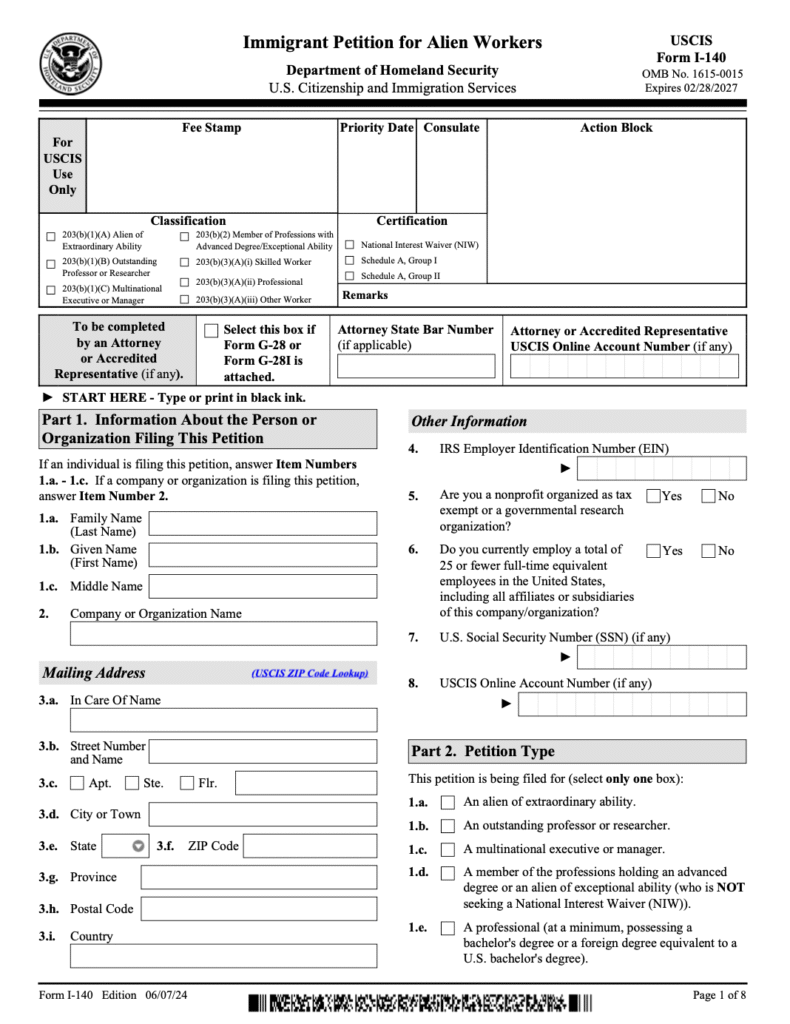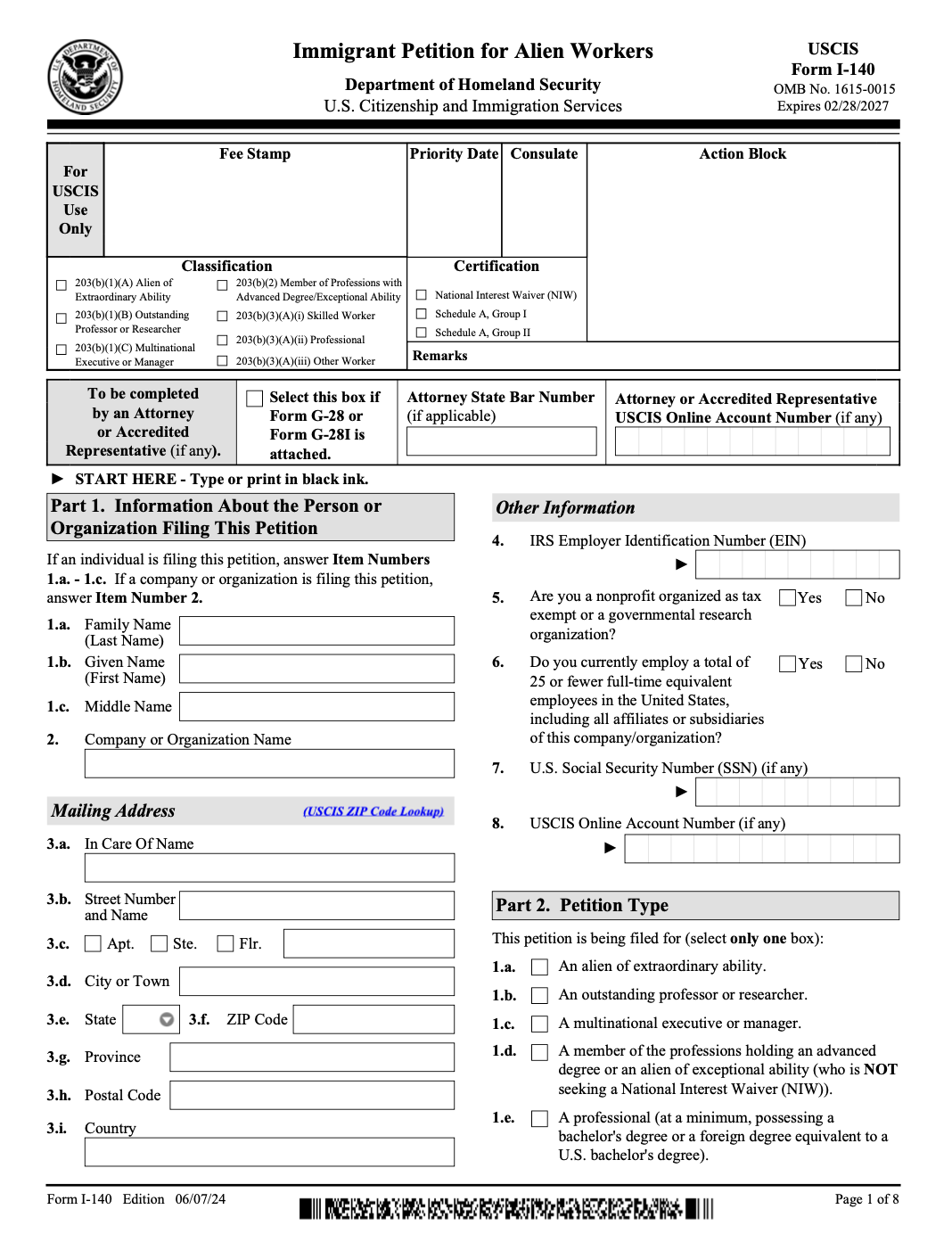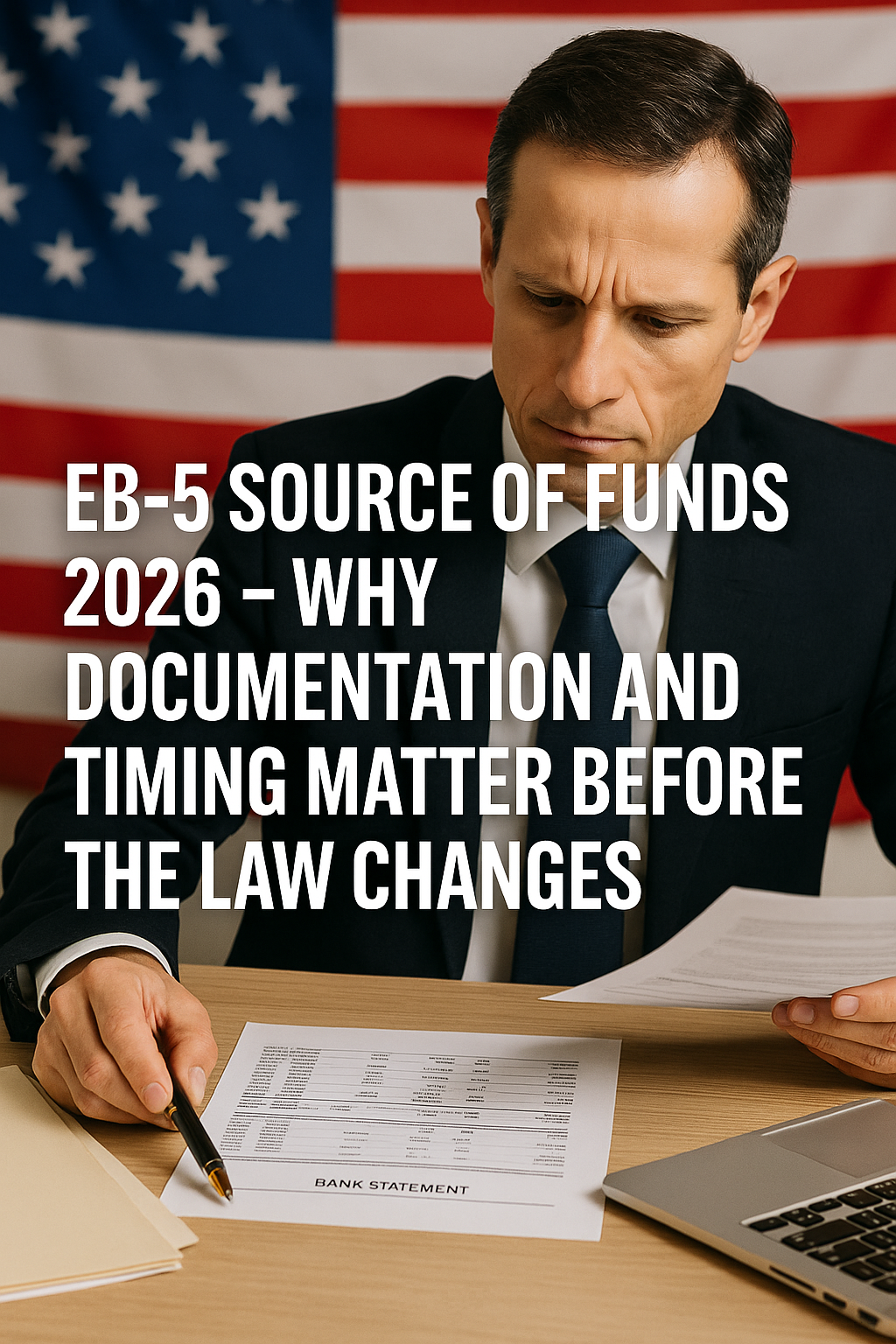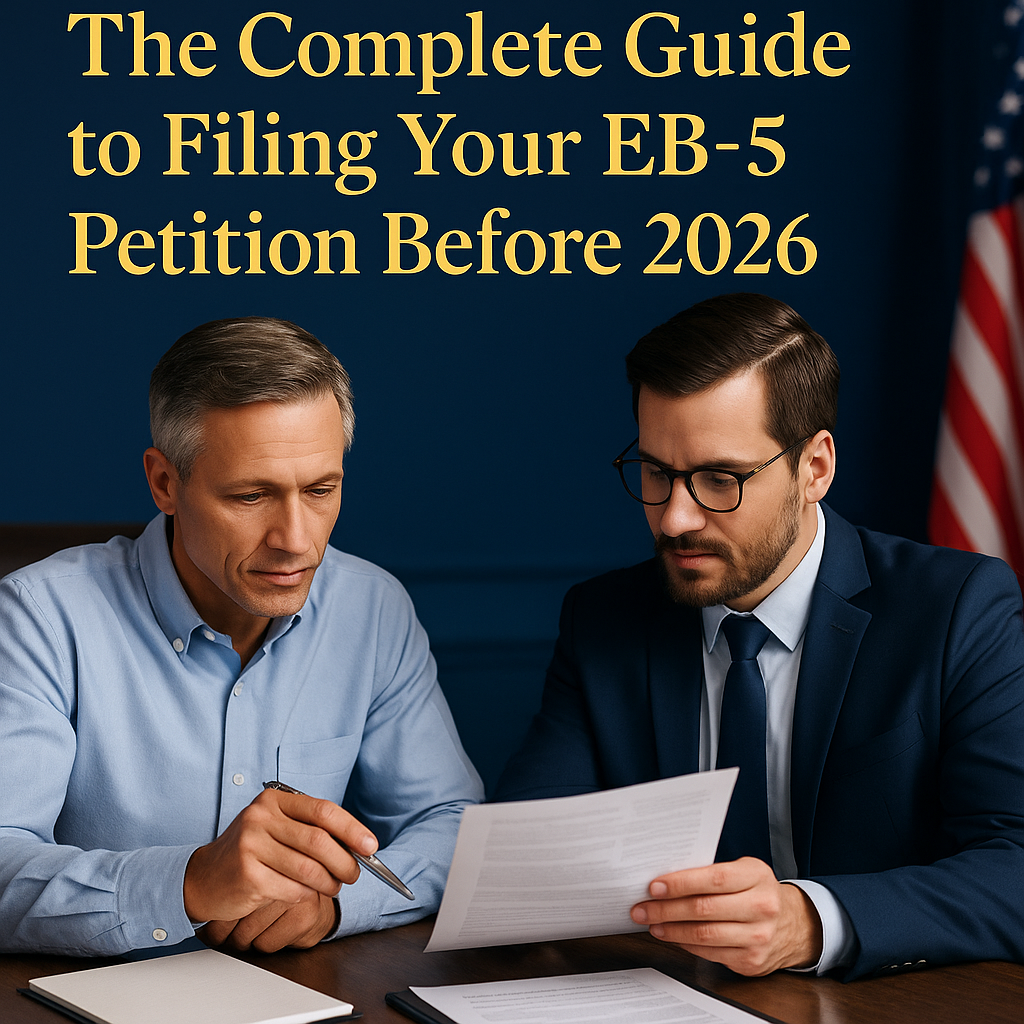The EB-3 Visa Tutorial Series 2025: How to Get a U.S. Green Card by Yourself and Save Thousands
If you missed the earlier parts of this series, start from the beginning to understand the full EB-3 process:
- Step 1: Understand the EB-3 Visa and Who Can Qualify
- Step 2: How to Find a Genuine EB-3 Sponsor and Avoid Scams
- Step 3: Navigating the PERM Labor Certification Process
Once your PERM Labor Certification is approved by the U.S. Department of Labor, the next step is to file Form I-140, also known as the Immigrant Petition for Alien Worker.
This stage officially connects the job offer to you as the foreign worker and proves that your U.S. employer is both eligible and financially capable of hiring you permanently.
In this article, The Immigration Magazine explains the purpose of Form I-140, what documents are required, how to file correctly, and how to avoid paying unnecessary legal or agent fees.

The I-140 petition officially connects your job offer to your Green Card.
What Is Form I-140?
Form I-140 is filed with the U.S. Citizenship and Immigration Services (USCIS) by the sponsoring employer. It establishes two main points:
- The legitimacy of the job offer.
- The employer’s financial ability to pay the wage listed in the PERM Labor Certification.
Once the I-140 is approved, the foreign worker can move to the final stage — applying for permanent residence (Green Card) through Adjustment of Status or Consular Processing.
Who Files the I-140?
Only the U.S. employer can file Form I-140. The employee is not the petitioner in this process. However, applicants should understand every detail, as errors in the petition can delay or even derail the Green Card process.
Instructions for Petition for Alien Workers
Documents Required for Form I-140
From the Employer
- A copy of the DOL-approved PERM Labor Certification.
- Company financial documents, such as tax returns, audited statements, or annual reports, demonstrate the ability to pay the offered wage.
- Proof of business registration and active status.
From the Employee
- Valid passport and identification documents.
- Copies of education credentials, degrees, and certifications listed in the PERM.
- Employment experience letters verifying previous work history.
- Any applicable professional licenses or permits.
Both parties must ensure that the information in the I-140 matches exactly with the data entered in the PERM Labor Certification.
Filing Options and Fees
The I-140 petition can be filed either by mail or online through the USCIS electronic filing system.
| Fee Type | Amount (USD) | Notes |
| Standard Filing Fee | $700 | Mandatory USCIS fee |
| Premium Processing (Optional) | $2,805 | 15-calendar-day processing guarantee |
The Premium Processing option allows faster adjudication but is not required. Applicants filing independently should be cautious of unlicensed intermediaries who charge inflated “service fees” for routine tasks.
Typical Processing Time
| Filing Method | Average Timeline (2025) |
| Standard Processing | 6 – 12 months |
| Premium Processing | 15 calendar days (if no issue) |
Delays may occur if USCIS requests Additional Evidence (RFE), which is common when documentation is incomplete or inconsistent.
What Happens After I-140 Approval
Once USCIS approves the petition, you officially have an approved immigrant visa classification under the EB-3 category.
However, approval alone does not grant the Green Card yet — you must wait until your priority date becomes current according to the Visa Bulletin issued monthly by the U.S. Department of State.
When the priority date is current, you can proceed to the final step: applying for permanent residency through Form I-485 (if you are already in the U.S.) or through Consular Processing at a U.S. Embassy (if you are abroad)
Common Mistakes to Avoid
- Submitting inconsistent information between the PERM and I-140.
- Forgetting to sign or include the correct filing fee.
- Using expired or unofficial financial statements.
- Failing to include evidence of educational equivalency for foreign degrees.
A well-prepared I-140 package with complete documentation drastically improves approval chances.
Expert Commentary
Immigration experts emphasize that while the I-140 stage appears technical, it is largely procedural when the PERM is done correctly.
As one U.S. attorney told The Immigration Magazine, “The I-140 is not about luck — it’s about accuracy. When documents match perfectly and the employer’s finances are clear, approval rates exceed 95 percent.”
For self-directed applicants, this means the cost of success is measured in diligence, not dollars.
Conclusion
The Form I-140 petition is the legal bridge between your job offer and your Green Card. By ensuring accuracy, complete documentation, and transparency, both you and your employer can move efficiently through this stage.
When done correctly, the only fees you should pay are official USCIS filing costs — no agency or middleman is required.
Continue Reading
Step 5: The Final Stage – Adjustment of Status or Consular Processing
The concluding chapter of our EB-3 Visa Series is now published. The Immigration Magazine walks you through the final steps of your Green Card journey — understanding whether to file through Adjustment of Status or Consular Processing, how to prepare for your interview, and what to expect when your U.S. Permanent Residency is officially approved.
[Read Step 5: The EB-3 To Green Card: Form I-485 and DS-260 Guide for 2025 Applicants]
Follow for More Tutorials and Updates
If you found this series useful, follow The Immigration Magazine for free EB-3 resources, legal insights, and interviews with immigration experts. We regularly publish updates on policy changes, success stories, and practical how-to guides for global residency and citizenship programs.
Follow us for more and connect with us on LinkedIn/ Facebook for weekly immigration news.









